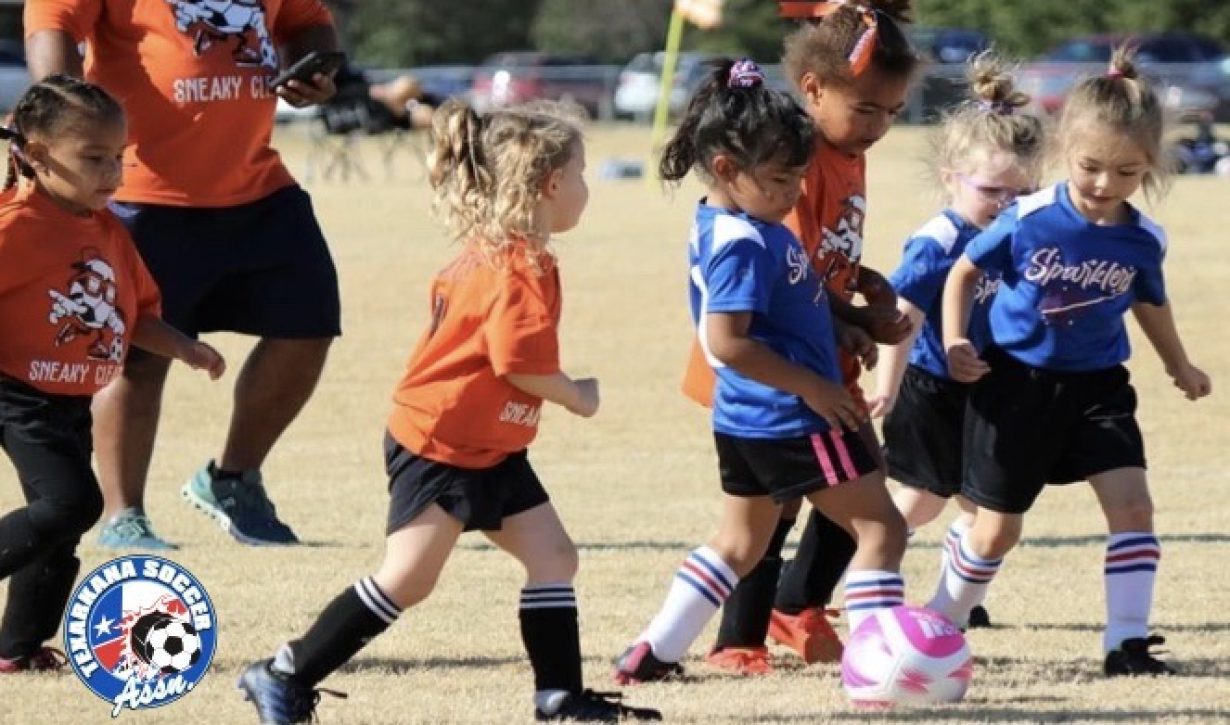
U5 Starter Guide
Players in this age range are still developing mentally, emotionally, socially, and physically, examples of player characteristics in this age group can be found below. Sometimes coaches tend to over value the learning capacity of players this age, but expectations should be low. Practices should never last more than 45 minutes, and all practices should end with at least 15 minutes of the kids playing an actual game against one another. Try to remember they are playing to actually play.
Ball Manipulationand Dribbling should be the primary focus of players at this age and practices should reflect an effort to create as many touches on the ball as possible per player.
Typical Characteristics of U5-U6 Players
Ego-centric – Players are self-focused, reality to them is solely based on what they perceive and experience.
Everything is in the present– They live in the moment, they aren’t going to care or remember if they didn’t score as many as the other team, either should you.
Physically not equipped to cool themselves – We need to give frequent water breaks- at least every 10 minutes.
Enjoy playing– Each player should have a ball during training so they can participate, remember they are egocentric at this age and typically don’t like to share.
Limited attention span– Directions should be concise and to the point, lead by demonstrating an example, not just verbal command.
Unable to self-evaluate – If they have given a good effort, they believe they have done well, be supportive of their enthusiasm!
Active imaginations – Coaches should utilize the imagination of players in practice activities, and they will love practice! Give names to your exercises such as “Sharks and Minnows”.
Look for adult approval – Watch how often players look to you for approval or to see if you are looking. Also be encouraging when they say “Coach, look what I can do!” Know their names!
Unable to think abstractly– Asking them to think about spatial relations or runs off the ball is unrealistic as they cannot perceive space at this age.
Lack directional awareness- Many players in this age group won’t understand move left, move back, move diagonally, try to remember this and temper natural frustration.
Coaching Priorities
EMPHASIZE – Dribbling with all sides & surfaces of both feet (inside, outside, sole, laces)
MAXIMIZE REPETITION- Be organized in your practice, the quicker the players can move from exercise to exercise the more reps they will gain. If they are having to wait for a coach to set up they are losing opportunities to touch the ball.
ENCOURAGE-
- Dribbling out of trouble rather than just randomly kicking
- Taking players on 1v1
- Trapping and receiving
- Basic passing
- Motor Coordination activities – changing direction, balance, jumping, backward movement, turning, rolling, etc.
- Keep it active and FUN! – No laps, lines, lectures
Video Examples
This video is a good explanation of some of the above statements. You may notice that these activities aren’t focused on the kids winning games but on developing them as not only soccer players but athletes.
This video has great examples of how to make games and training fun for the kids.
A good video if your players are a bit more advanced

 Follow
Follow